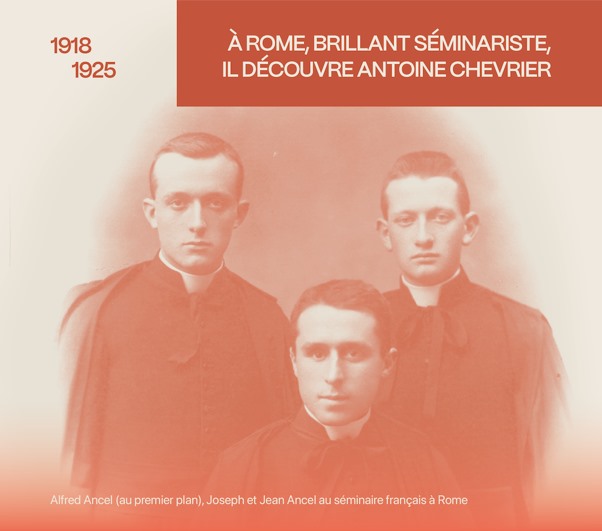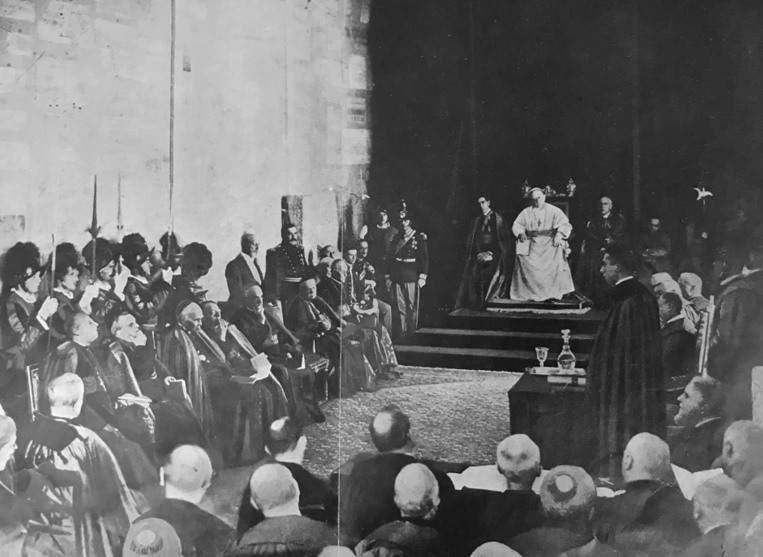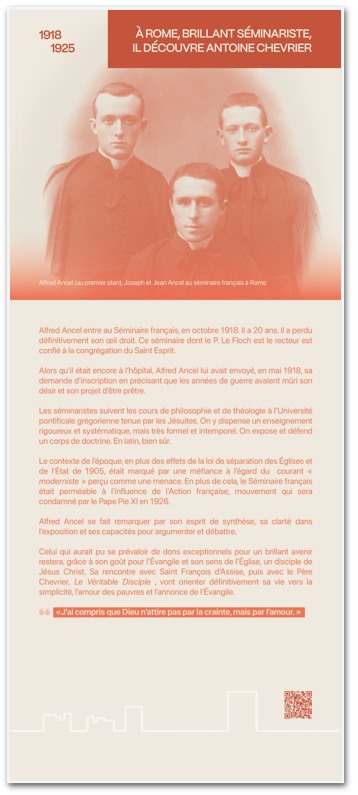
A spiritual approach
Extract (page 46) of Mgr Olivier de Berranger, Alfred Ancel, a man for the Gospel, 1898-1984, Centurion, 1988.
There was one event that marked Alfred Ancel's career in the ecclesiastical world, and it was this event that enabled him to reach a peak in the elitist trajectory we have described. The fame of his family, who were able to present three of their sons in cassocks to the Holy Father at a memorable audience, was not in vain. On 17 May 1924, in a unique event in Roman history, in the Vatican's Lapidary Museum, a long gallery with walls engraved with ancient inscriptions, and facing Pius XI seated at the back on a raised armchair, Abbé Alfred Ancel, standing in front of nine cardinals and in profile to an imposing number of bishops, professors and students seated on more than three hundred benches, defended his doctoral thesis in theology. He was questioned in turn by Cardinal Billot on "the real presence of Christ in the Eucharist", Cardinal Laurenti on "the juridical primacy entrusted by Christ to Saint Peter" and finally Cardinal Sincero on "the distinctions of substance and relationship in the Trinitarian mystery".

Reading of the book by Father Antoine Chevrier
Extract (page 47) of Mgr Olivier de Berranger, Alfred Ancel, a man for the Gospel, 1898-1984, Centurion, 1988.
There was another event, unnoticed at the time, which had an even greater impact on Alfred Ancel's life. When his mother came to Rome for the family audience, she brought her eldest son a book published in Lyon in 1922. Its title was: "The priest according to the Gospel, or the true disciple of Our Lord Jesus Christ". And its author: Antoine Chevrier, priest and founder of Prado. Only the young priest's close friends, Émile Guerry and Gabriel Garrone, were soon made aware of this second event. Occasionally, Alfred Ancel, enthused by his new book, would read a passage or two to a group of seminarians gathered in the courtyard in front of the Tutela Domus, a statue of the Virgin Mary, protector of the school.
Alfred Ancel was immediately struck by the evangelical testimony of the humble priest from La Guillotière. He was not just a student at ease in the world of ideas. He had not forgotten the profound experience of the absolute that had gripped him during his graduation retreat. He had also had the opportunity to deepen a nascent attraction for the Gospel in 1918, when forced to rest in hospital after his eye operation, he had read the famous Life of Francis of Assisi by the Dane Jœrgensen. How could he have failed to notice the similarity of resonance between the message of the Poverello and that of Antoine Chevrier? In the latter, the attraction for the Gospel was united with the ideal of a priesthood lived as a disciple of Christ.
